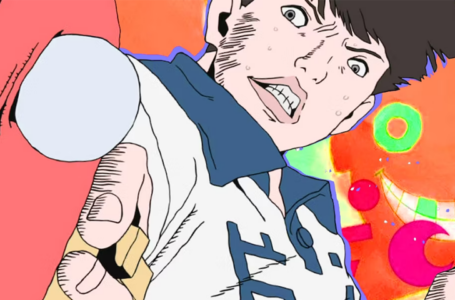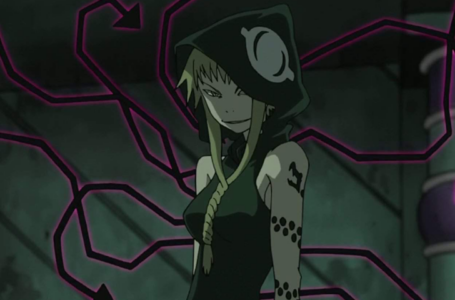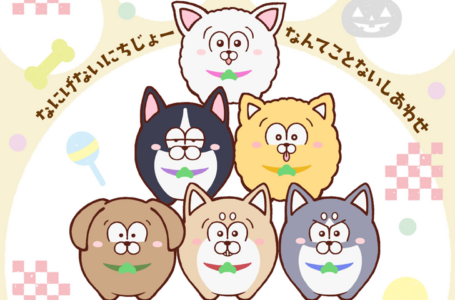Wonder Egg Priority is a successful failure
When it comes to recently aired anime, it’s been a long time since one has left me feeling so conflicted and unsure of my feelings after an initial watch.
Wonder Egg Priority has been very well received during its run, and even on its wrap-up after a mere 12 episodes has left most viewers impressed. And this is understandable, since the anime had plenty going for it — the stunningly sleek, movie-budgeted visuals; an intriguing original premise; and a plot that hides a lot beneath its cute surface and simple synopsis.
To showcase what I mean about my mixed feelings towards the show, I’ll be discussing both the good and the bad within its tough exterior. Let’s crack open the case: is this anime a modern classic, or is it not as deep as most regard it to be? This is going to be a long one.
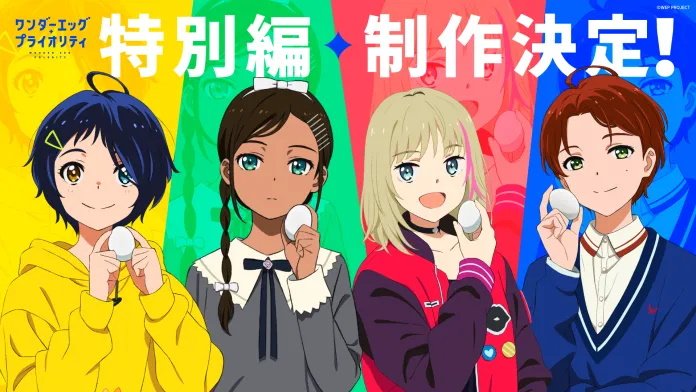
A good egg of a show?
As previously mentioned, Wonder Egg Priority’s initial main appeal is in its gorgeous art and animation. Provided by studio CloverWorks, known for their work on Darling in the FranXX, The Promised Neverland, and Horimiya, to name a few, the anime also hearkens back to similar girl-focused, magic wielding saviour-esque titles such as Flip Flappers and even Black Rock Shooter. This is what caught my attention as the incentive to watch the show, and I doubt I was alone in that — any clip shown of Wonder Egg Priority reveals how much spectacle and visual flair it has going for it.
Wonder Egg Priority’s fight scenes are fluid and impactful and the vibrant colours are consistent and endearing, be they seen in character designs or backgrounds, and these vibrant designs are juxtaposed with the show’s dark undertones.
Its overall design is refreshing, unique, and gorgeously polished, with the anime and real world art mixing in its opening as one such example. It’s truly a treat for the eyes, and it’s evident how much hard work has gone into its creation, especially with the knowledge of how overworked its staff were to meet this level of quality for its deadlines. And while my appreciation for their admirable passion and focus will never dwindle, is it all hollow once we get to its content?
The similarities with such shows mentioned makes for an enough of a reason to delve into the product, but if you’re debating watching Wonder Egg Priority, then please go into it with the knowledge that it contains a massive magnitude of sensitive and triggering subjects. It most definitely is not for certain viewers due to particular narratives and imagery that I will go into more detail on later. For now I’ll be tackling its various, colourful array of characters — sadly, many of these fall on the wayside due to little to no development over the course of the series.
And this is only one of the many issues I have with the show. So brace yourself, as it’s mostly all downhill from here.
A wonderful cast of characters…
It’s important to first state how Wonder Egg Priority should ideally be viewed without any prior knowledge of the show, and this is evident with examples of anime similar to it such as Perfect Blue and Puella Magi Madoka Magica. Therefore for the sake of those who haven’t watched it yet, we’ll be discussing the show without spoilers for the most part.
However, mentioning the dark content of the show cannot be avoided, as it is the focal point of much of the narrative; Wonder Egg Priority attempts to explore many dark and serious themes concerning trauma.
Trauma greatly affects almost every single character of the show, most notably in its young main characters where their unique circumstances are explored in great detail. The topic of suicide in particular affects mostly everyone in Wonder Egg Priority, with the main characters having lost someone who has affected them in one way or another by suicide, and helping other girls to pass on after having committed suicide. This paves the way of the development of its four leading girls. Or does it?
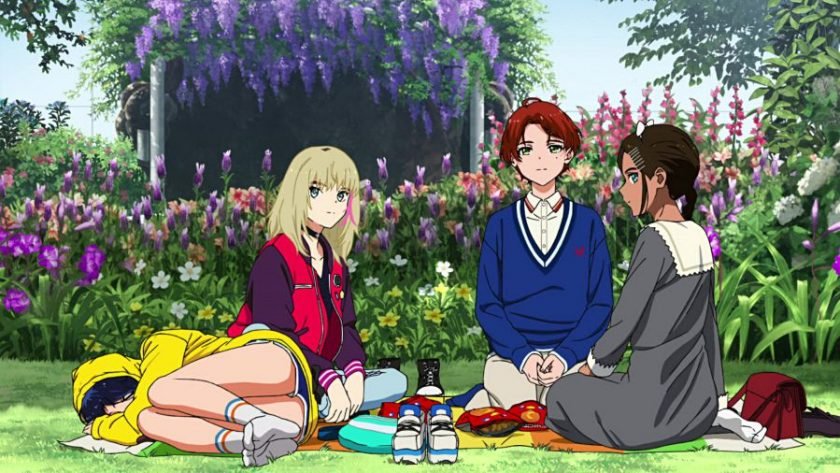
Wonder Egg Priority’s four leading girls are Ai, Neiru, Rika and Momoe, each forming a distinctive part of this budding friendship group of young, innocent teenagers. And each are relatable, facing their own hardships while helping other girls around their age come to terms with their own traumas — ultimately granting them the closure they deserve to peacefully pass on.
Ai in particular feels a great deal of self-hatred, loneliness, and depression, with a childhood consisting of bullying that made her into the shut-in that she is. That is until she meets Koito, who is endearingly the opposite of Ai, being an approachable and friendly individual, and whose quite forceful entrance into Ai’s life is the catalyst to Ai’s self-improvement.
This is the first instance of friendship being a defining theme of the anime, and while it’s nothing new, it’s the most solid element of Wonder Egg Priority. The conversations and clashes between the girls feel natural and are seen enough times to reinforce their closeness and bonding.
Meanwhile, Neiru carries the burden of having too much responsibility at such a young age, isolating her from having a normal childhood. Rika wants the affirmation and affection from loving parents, and Momoe is going through an identity crisis as a woman with a more masculine appearance. These issues are different enough from one another to touch a viewer’s own personal experiences, but when we look deeper into the lessons of each, the show starts to fumble its way through a messy narrative.
…and their untouched potential
Ai’s development across Wonder Egg Priority’s 12 episodes is a highlight despite it coming out of nowhere. Her character from episode 1 is in complete contrast to the one we see in the final episode, where she was once introduced to us as a shy, insecure and weak individual closed off to any and all form of socialising; by the end, she stands strong, confidently and assertively against a personal, mentally challenging threat.
Each main girl has a catchphrase once they get heated during battle, and Ai’s “now I’m mad” line manages to fire me up every time by it being the one time we get to see such heightened emotions bursting from her usually downbeat self. It’s utilised well, but her jump to this self-improvement is far too sudden — as soon as episode 2, in fact — since she comes out of her shell immediately after making friends with Neiru despite indicating a clear struggle in accepting Koito just before.
This is the first indication that Wonder Egg Priority could have done with more episodes to add the necessary scenes and moments to indicate natural development of its characters and make it feel more realistic.
But if there was one character who had the most impressive turnaround and actually had enough screentime to reinforce this, it was Rika — who is easily the most complex of the bunch for this reason.
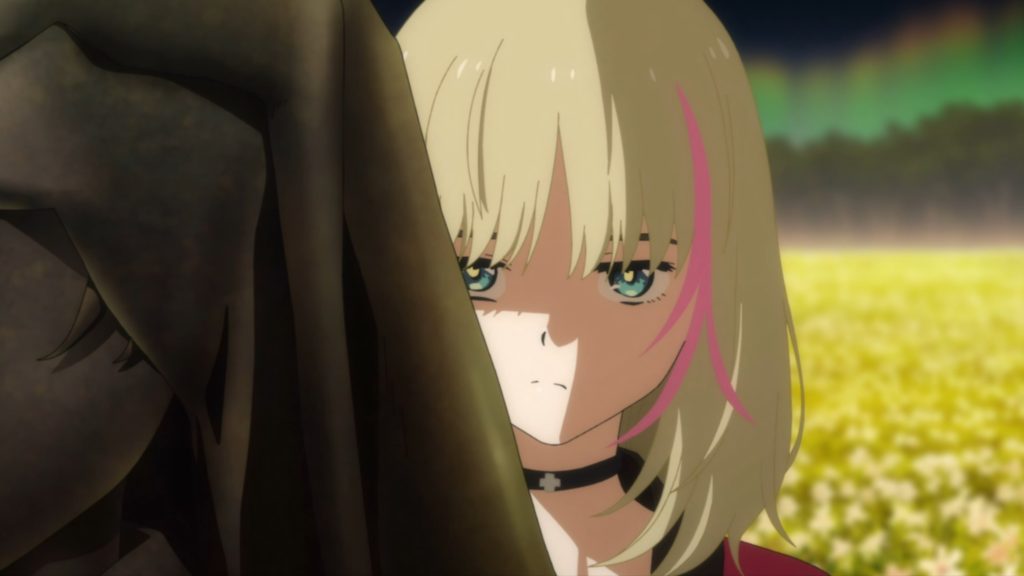
Rika comes across as confident, being openly cheeky and flirtatious — a remnant of her former life as an idol. Her security in herself comes under fire as soon as her trauma is revealed, though; this is one instance of her showing vulnerability in stark contrast to the front she puts on for everyone.
Rika’s particular trauma has left her guilt-ridden, and even made her start self-harming to bear with the consequences of her words that led to someone else’s self-inflicted demise. Her character gets further exposure in a later episode where we see how her upbringing under a single mother has further shaped her personality and attitude as she craves the affirmation of her father and wants a connection to him.
This not only proves to be a lesson for her to accept the love of her mother who has always stayed by her side, but indirectly helps Ai’s journey in improving her bond with her own mother since the pair can relate to one another. Her arc has the necessary amount of exploration to explain her current state, and nicely ties into helping the main character.
And that’s arguably the best part of Wonder Egg Priority. I can only speak on topics I personally feel a sense of connection to, but on the few that do hit home for me, it shows that Wonder Egg Priority does deliver on the emotional stakes when the time calls for it.
Rika’s desperation to feel a sense of connection with her father is the very same as my own position, with her thoughts and words on her vulnerability coming across as genuine and phrased similarly to how I’d express my own feelings on the matter. And the focus on it on one episode provides enough coverage to make Rika one of the most well-rounded and layered main characters in Wonder Egg Priority, since there ends up being far more to her characterisation and growth compared to everyone else.
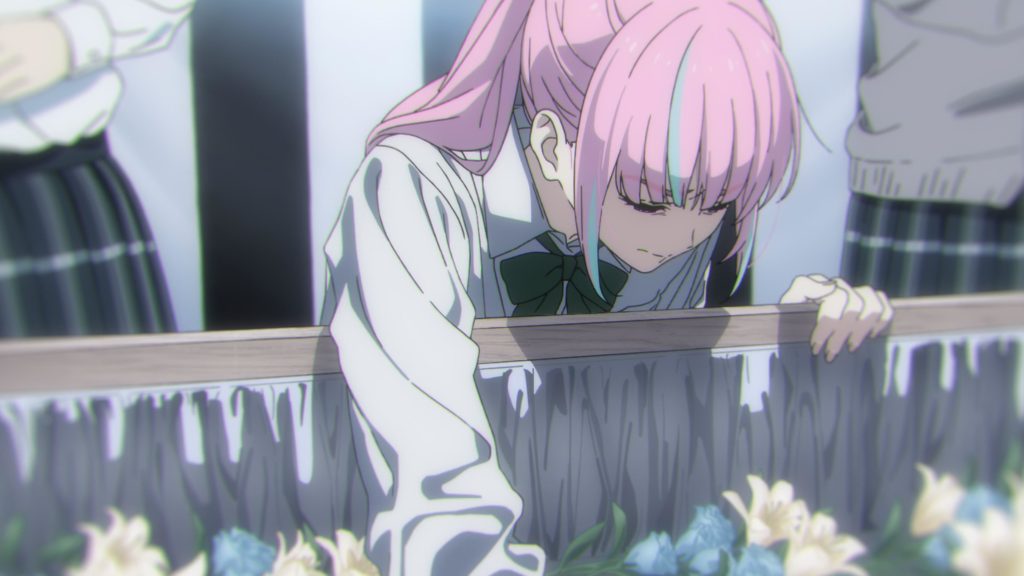
Meanwhile, Ai’s initially non-existent confidence and reserved disposition will be relatable for the majority of Wonder Egg Priority’s viewers, making for the Ai we see in the final episode specifically so inspiring; her simple response of “yes, I’m happy” when asked hits hard.
Such examples indicate how many of us will feel connected to the show’s main characters through their living situation, their words, and how they express their traumas — but the same care and attention to detail is undoubtedly missing in every other victim of the anime. It’s even amiss in its other two main characters.
And when this is such a focal point to Wonder Egg Priority, it’s terribly cruel how seemingly dismissive it is towards some of these traumas. For example, each episode often follows one or more “egg girls”, with only a couple of lines worth of dialogue uttered to convey to the main characters and audience what the victims’ background and trauma might be. With no other characterisation other than this for these unfortunate souls, it’s simply not enough.
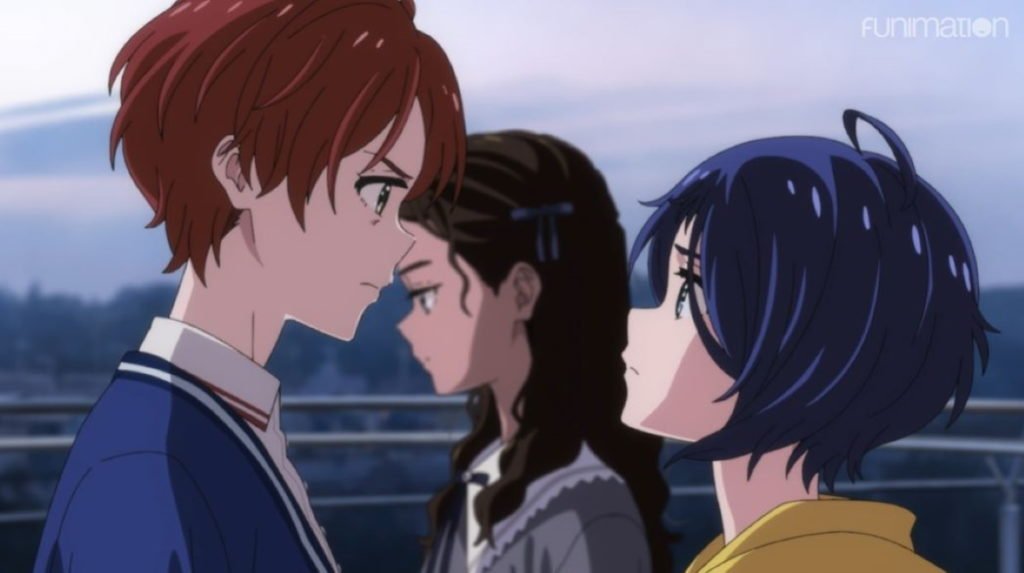
Looking back at our main characters, both Neiru and Momoe greatly suffer from having such little screen time and barely any storylines dedicated to them across the show’s 12 episodes. Neiru’s origins leave her development stagnant; her personality never evolves and is merely the token “tsundere” trope — if you can even really call her emotionless personality that.
Momoe’s case is far more concerning and unfortunate due to what it tackles. Her identity issue had the potential to look into how societal standards affect her — or at least explore these possibilities with the many highly sympathetic victims she helps.
Momoe herself barely has any exploration as a character whose identity is still being shaped, and instead serves as someone who guides “egg girls” dealing with problematic traumas such as rape, dysmorphia and transgenderism, and teenage pregnancy. Each feels hammered in to make each victim feel even more tragic than the last, with no real lesson as the pay-off.
It’s unnecessarily cruel, and nowhere is this made as uncomfortable as the visualised advancement of a rapist on top of the only confirmed trans character. For an anime that does more telling than showing, this one case is troubling to say the least.
You are (not) alone
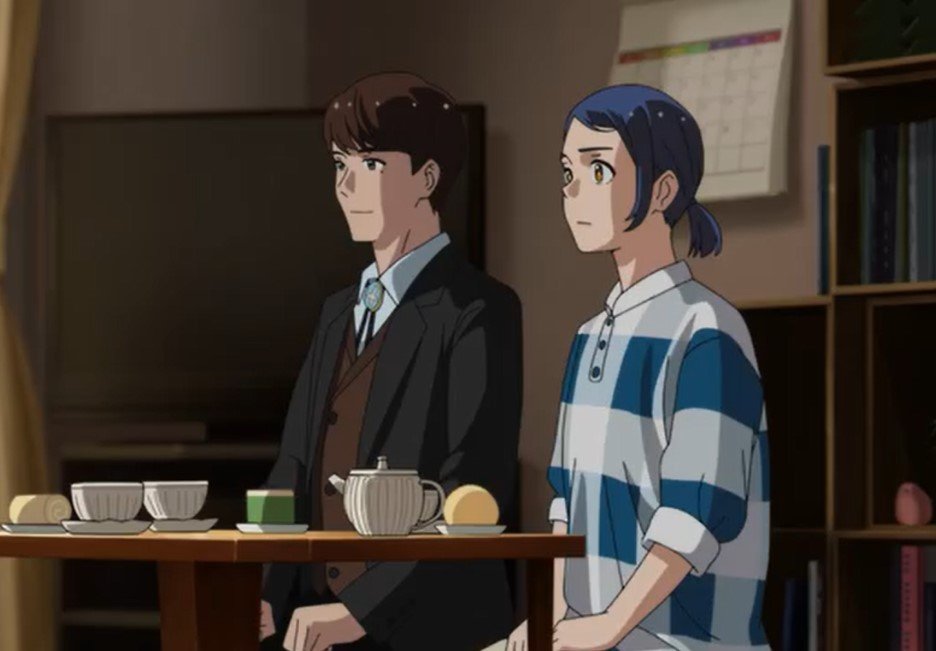
Another cause for concern are the adult characters in Wonder Egg Priority. With how few there are, each one indicates either suspicion, or neglect.
Ai’s teacher, Mr Sawaki, is constantly implied to have ulterior motives, while Ai’s mother, Tae, appears blissfully unaware of her daughter’s trauma — in fact never learns of it even in the end.
The fact that their non-existent communication has a hand in Ai’s alternative version of herself committing suicide is even more troubling, but the message is there, at least. It highlights the importance of speaking to those close to you when going through difficult times, and the anime’s emphasis on friendship helps drive this important message home; it’s Ai who encompasses this most.
However, what’s deeply saddening is the unfortunate lack of depth regarding the many supporting characters who often feel like accessories to the main girls. This is further exemplified by the fact that each girl’s individual trauma always relates to an “egg girl” they are fighting for. Ai’s girls always lack confidence, for example, while Rika’s tend to relate to the idol industry.
While this does show growth in its four leading characters, the same can never be said for the many victims. The anime explores mental illness through the perspective of its bystanders — the main characters — whereby the episodic victims who commit suicide pass on trauma to those around them. This focus on the self-mourning of our main characters leaves out the urgency of understanding the victims’ own pain and the layers to their characterisation and choices. Never is this more obvious than in the case of Ai’s best friend never revealing their reason for committing suicide even in the end. It feels dismissive, harsh and unjustified.
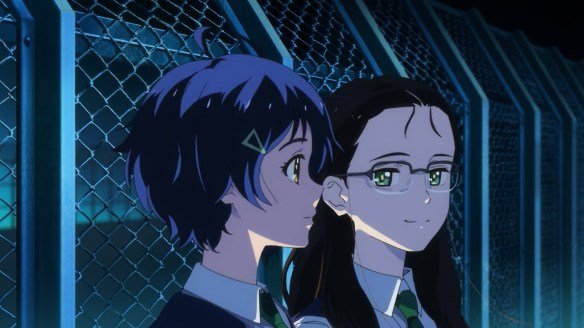
Beautiful visuals hindered with unimaginative designs and meanings… for the most part
The symbolism in Wonder Egg Priority is also incredibly bothersome, with simplistic villain names such as Seeno Evils and Haters not hiding any further meaning behind their given titles.
The childish abnormalities also do little to conjure up the image of the trauma its victims have experienced since they always appear far too childish and non-horror-esque despite psychological horror being a tagged genre of the show.
But the designs of the Wonder Killers — the manifestations of the victims’ real life assailants — are most certainly the most disappointing. They are always forgettable, uninspiring and fail to capture any representation of the perceived horror or relevance to their real-life counterpart.
For example, we know Mr Sawaki paints as a career aspiration, therefore this element of his character is taken and forms his Wonder Killer form in the dream world.
No such care or attention to detail can be seen in any other such villain — this is just one indication that the episodic structure holds back the show’s overall narrative. It’s understandable that such characterisation will be omitted because of the little screen time we have with the “egg girls”, but the sheer amount of wasted potential was constantly evident. I couldn’t help but think how something like Persona 5 tackled similar subject matter so much better.
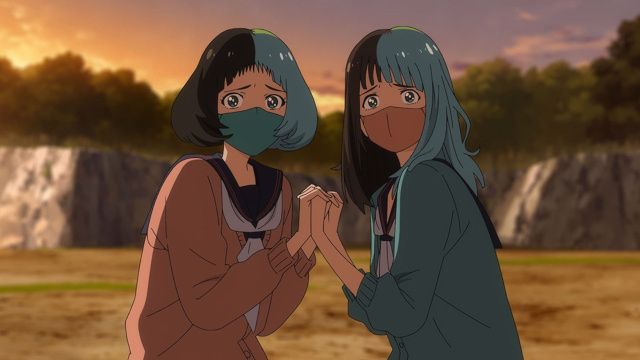
Additionally, each trauma being encompassed in just one enemy fails to highlight how society is the true villain, making for yet another missed opportunity; the show had a chance to send an important real-world message here.
Furthermore, the fact that every trauma is constrained into one Wonder Killer does more detriment to the initial message of overcoming trauma since it’s simply not a realistic portrayal of mental illness. In fact, the intended message of strong, young girls defeating their inner demons ends up being thrown out of the window by the 11th episode when a certain origins story is revealed that turns the show’s themes on its head. But more on that later.
And despite my previous praise for Rika’s character, her arc also includes one of the worst examples of the show being rather too literal in its meaning, where some not so subtle metaphors rear their unappealing heads.
One of the most poignant episodes is that of Rika accepting her mother after almost succumbing to a Wonder Killer. Her fragile mentality at the time was saved by her pet, Mannen, as she mumbles how the pet now sees her as its mother — and mothers deserve protection. This literal spelling out of the episode’s message takes the viewer right out of the sense of immersion; the pay-off now feels unnecessarily detailed and is no longer a memorable moment. If you have to spell out your message like that, you’ve failed to deliver it effectively.
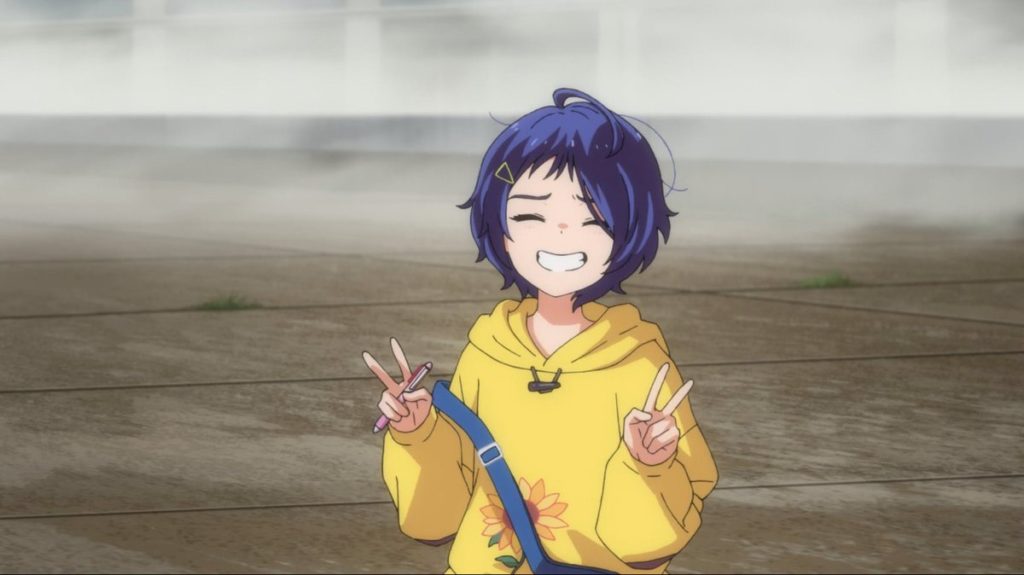
On the other hand, Wonder Egg Priority should be praised for its impeccable usage of cinematography, making it really stand out as a prime example of how far the anime medium can be pushed. On top of this is its emphasis on the visual language of flowers, which add layers of meanings without saying a word.
The first episode alone is filled to the brim with such references; one of the first framed shots of a flower is a white lily, which represents sexuality and innocence. And, of course, there’s the case of Ai’s top, which sports a massive sunflower. Sunflowers are regarded as representing happiness and strength which Ai firmly believes she is not in possession of — that is, until she fully blooms in episode 12, of course.
Other causes for concern
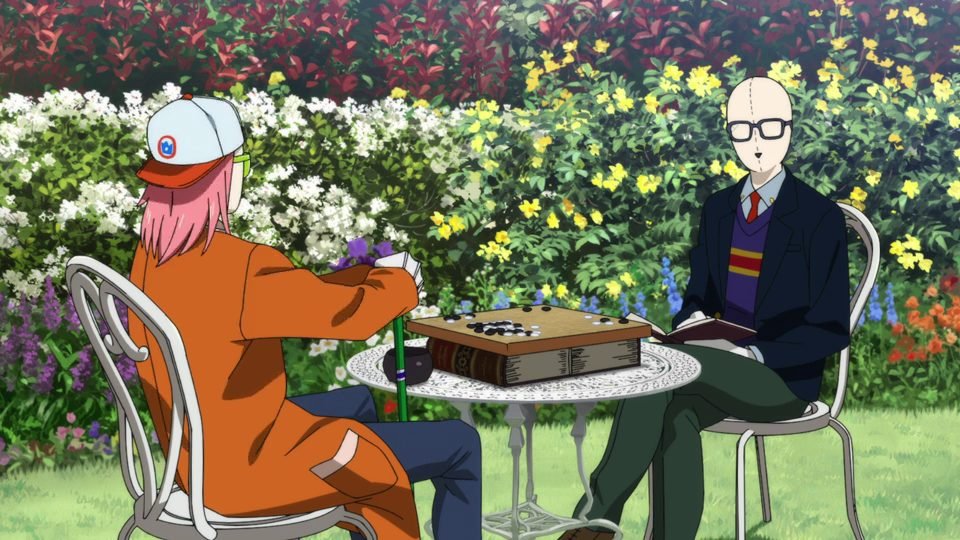
For an anime centred around the strength of femininity, there is a concerning amount of misogyny which is often spoken by the show’s most suspicious pairing of adults: Acca and Ura-Acca. They shamelessly deliver lines such as “boys’ and girls’ suicides mean different things. Men are goal-oriented, women are emotion-orientated. Women are impulsive and easily influenced by others’ voices” and “being uncontrollable is the essence of femininity”.
Not only do these lines undermine our supposedly strong young girls and females in general, but the line where they mention how our main girl group are just thinking and talking about make-up is just as bothersome when you’ve already established the character of Momoe. It makes the show no longer about the empowerment of young girls — but this is still not the most off-putting moment of the entire show when it comes to its take on femininity.
Wonder Egg Priority has a lot of ideas, and this is most obviously the case by the last two episodes where we have the origins of Acca and Ura-Acca, shown in flashbacks which attempt to show how the eggs and dreams came to be.
A young and cute (because of course she is) AI created by the two men turns evil when one of her parental figures marries and impregnates a woman. The flashback goes on to indicate that Frill, the AI, is the cause of young girls’ suicides. This undermines the greater, wider correlation to societal circumstances surrounding the very real emotions and hardships of the characters and depression in young women specifically. This seems like the show is attempting to explain away women’s mental health issues as an AI controlling our “easily influenced” emotions. Maybe the true villain has and always will be Acca and Ura-Acca after all.
These two episodes of Wonder Egg Priority also provide a sense of tonal dissociation; where the anime was once a psychological journey of overcoming trauma, after this point it becomes a sci-fi mystery adventure. The specific plot twist of alternative timelines also feels too sudden to appreciate despite the brilliant idea of introducing the two Ais to show how far Ai has come. Because of how sudden this twist was with no build-up behind it, it is yet another indication that the show deserved way more episodes to make the narrative less jarring.
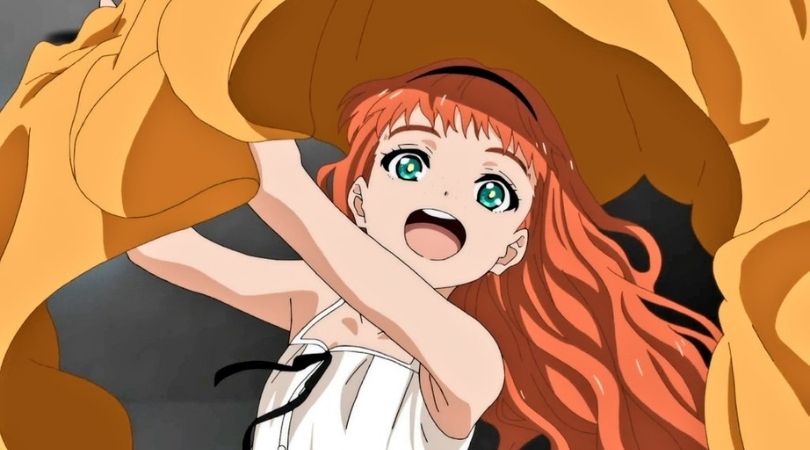
Additionally, some “rules” established early in the show fail to be consistent — the very first episode highlights that a school bell rings to indicate a dream is ending, for example, and if the girls get hurt in the dream, it transitions to their real bodies once they wake up. But this is never the case ever again in its following episodes.
On top of that, the first “egg girl” we encounter is the only one to know of the events transpiring around them, and she explains it to Ai. It’s never explained why she’s the only “egg girl” who knows about the dreams — therefore it comes across as an overly convenient way of relaying key information to the audience.
Considering this was Shinji Nojima’s first attempt as an anime writer, it explains how some aspects of the show’s narrative are hit and miss — but ultimately it feels appropriate to suspect that it comes down to 12 episodes being too little to explore all of his material.
A story without enough depth
And this is ultimately my main problem with Wonder Egg Priority; it simply took on far too many elements, ideas and story-threads to constrain itself within 12 episodes. The show does, however, leave on a thankfully positive note, with a final message of being the very best version of ourselves we can be for our own benefit and happiness.
The journey to this destination was through a messy narrative, poor character development, and a failure to explore sensitive topics in the depth they could have been. But despite this, it was respectful in exploring many real-life issues in a way quite unlike any other anime before it — while being surprisingly representative of many typically untouched topics. On top of that, it has presents how far cinematography and animation in anime can go, although admittedly with far too much labour going into it to deliver the splendid results.
But in the end, it’s left me feeling bittersweet. From its harsh production schedule to its overall messages, Wonder Egg Priority is something else entirely.
It is a true wonder how Wonder Egg Priority even managed to come to be, considering its amateur team, overworked staff, delayed episodes, and time restraints — the latter of which are made particularly evident through the eighth episode being a recap episode.
In the end, Wonder Egg Priority is a deeply flawed but unique experience I’m actually grateful for, no matter how I perceive certain aspects of it. And there’s a special episode airing in June; perhaps this might help put a positive spin on some of the show’s pitfalls.
What did you think of Wonder Egg Priority? Let us know in the comments or via the usual social channels!
Wonder Egg Priority is available to stream on Funimation.
Join The Discussion
Rice Digital Discord
Rice Digital Twitter
Rice Digital Facebook
Or write us a letter for the Rice Digital Friday Letters Page by clicking here!
Disclosure: Some links in this article may be affiliate links, which means we may earn a small commission if you make a purchase after clicking on them. This is at no additional cost to you and helps support Rice Digital!
- Sigh of the Abyss: Shadow Bonds – Prologue Review - October 7, 2023
- Is She The Wolf? is wickedly addicting TV - October 6, 2023
- The steady consumption of Slow Damage - October 5, 2023




